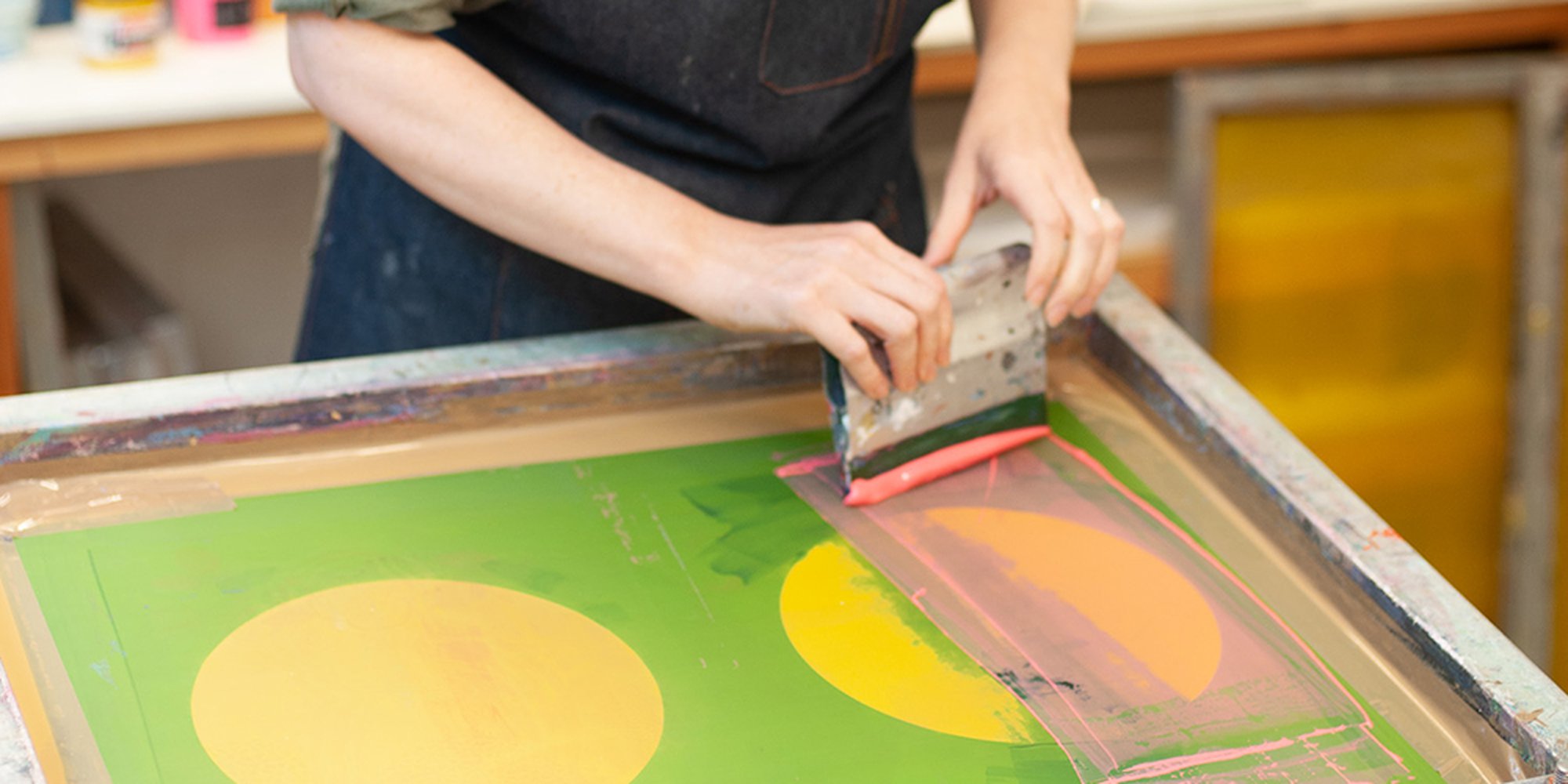ChatGPT said: Unbiased breakdown of 10:9 Design reviews: what you should know before ordering
The Vital Overview to Comprehending Screen Printing and Its Versatile Makes use of
Screen printing has an abundant background that goes back to old times, evolving into an innovative strategy used across various sectors today. This overview explores the complexities of the screen printing process, outlining its applications in style, advertising, and home design - 10:9 Design contact. Recognizing these basics can open innovative possibility for both imaginative and business projects. The adhering to sections will disclose necessary ideas and methods to boost one's screen printing ventures
The Background of Screen Printing
Although screen printing has origins that map back centuries, its advancement reflects the technical and imaginative developments of various societies. Coming from ancient China, the technique was at first made use of for embellishing fabrics and later infect Japan, where it came to be indispensable to Ukiyo-e woodblock printing. The technique moved to Europe in the 18th century, where it got appeal amongst artisans and business printers. The innovation of photo emulsion in the 20th century changed screen printing, permitting more intricate layouts and higher performance. Musicians like Andy Warhol even more thrust its appeal, using the tool to create renowned works that blended commercialism and art. By the late 20th century, screen printing had developed itself as a functional strategy, used in fashion, marketing, and fine art. Today, it remains to progress, incorporating electronic technology and broadening its applications throughout various industries.
The Screen Printing Process Explained
Screen printing changes imaginative visions into substantial designs through a collection of exact steps. Originally, a picture is produced and afterwards transferred onto a screen, normally made of great mesh material extended over a framework. A light-sensitive solution is used to the screen, which is revealed to light, setting in areas not covered by the image. After rinsing the unhardened emulsion, a stencil is developed.
Next, the screen is put over the substratum, whether it be textile, paper, or an additional material. Ink is after that pressed through the open locations of the stencil using a squeegee, depositing the style onto the substratum below. This procedure can be duplicated for several colors, requiring different displays for each and every shade. Finally, the published product is healed using warmth to assure the ink sticks effectively, leading to a long lasting, vivid design on-line.
Sorts Of Screen Printing Techniques

Furthermore, specialty methods, such as discharge screen printing, eliminate dye from the textile to develop softer prints, while aluminum foil screen printing uses metal aluminum foil to accomplish a glossy surface (10:9 Design Screen Printing). Each method offers distinct features, satisfying various creative demands and production scales, eventually expanding the possibilities within the screen printing domain
Applications of Screen Printing in Various Industries

Furthermore, the signs and advertising find more info and marketing markets use screen printing for producing appealing display screens and banners. This approach allows for bold colors and intricate styles that catch attention. In electronics, screen printing is utilized for applying conductive inks to motherboard, necessary for part connections. The home style industry embraces screen printing to generate distinctive designs on textiles and wall surface art. On the whole, screen printing functions as a critical device throughout varied areas, improving items with customized and visually attractive graphics.
Tips for Successful Screen Printing Projects
While undertaking a screen printing task, mindful focus to detail can substantially improve the last result. Picking high-quality materials is essential; this consists of the screen, inks, and substrates. Utilizing ideal mesh matters can impact ink deposition and detail resolution. Prep work is equally vital; extensive cleaning of screens and proper direct exposure times assure crisp prints.
Next, accurate enrollment is crucial for multi-color prints. Using placement tools can aid attain accurate layering. Additionally, testing prints on scrap materials before manufacturing assists identify possible concerns without wasting resources.

Regularly Asked Concerns
What Products Are Ideal for Screen Printing on Material?
Cotton and polyester blends are ideal for screen printing on material because of their sturdiness and ink absorption. In addition, specialized fabrics like silk or canvas can generate one-of-a-kind textures and finishes, boosting the general style high quality.
How Do I Tidy and Maintain Screen Printing Equipment?
To maintain and cleanse screen printing tools, one must on a regular basis wash screens with appropriate solvents, examine squeegees for wear, oil moving components, and store all items in a completely dry, dust-free atmosphere to extend their life-span.
What Are the Ecological Effects of Screen Printing?
Screen printing can have significant environmental impacts, including chemical waste from solvents and inks, water use throughout cleansing procedures, and power intake. Green products and lasting methods are necessary for decreasing these adverse impacts.
Can Screen Printing Be Done in the house Successfully?
Screen printing can be efficiently done at home with the ideal products and techniques. Hobbyists can develop top quality prints, though success depends upon their skill level, tools, and understanding of the process check this entailed.
What Are the Prices Linked With Beginning a Screen Printing Service?

Beginning a screen printing organization find out here involves prices for devices, products, and workspace. Preliminary costs typically vary from a couple of hundred to numerous thousand bucks, relying on the range, high quality of machinery, and wanted manufacturing ability.
Screen printing has an abundant history that dates back to old times, advancing into an innovative method utilized throughout different industries today. One more strategy, rotating screen printing, uses cylindrical screens, promoting constant printing on textile rolls, thereby boosting effectiveness for massive manufacturings. Furthermore, specialized methods, such as discharge screen printing, get rid of dye from the material to create softer prints, while foil screen printing applies metal aluminum foil to attain a glossy finish. In the fashion industry, screen printing is widely used to develop dynamic layouts on apparel, allowing brands to display their special designs. Cotton and polyester blends are ideal for screen printing on fabric due to their resilience and ink absorption.